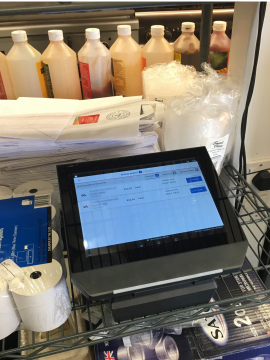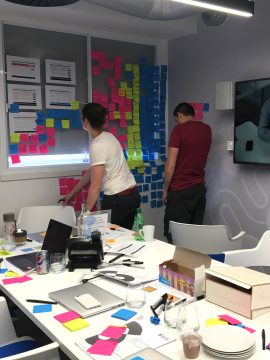Understanding how people engage with content to drive participation for the BBC
The BBC approached System Concepts to explore the many ways users participate with content available publicly online, as well as how they participate ...
A world leader in online and mobile food ordering, Just Eat operates across 20 countries, with over 68,000 restaurants and grocery partners.
Just Eat’s service involves a touchscreen device that its restaurant partners use to process orders. This device plays a crucial role not only in the accuracy and efficiency of the order taking process, but also in end to-end service delivery, customer communications and overall user experience. We were commissioned to help Just Eat develop a deeper understanding of usability issues and the restaurant partner experience in relation to its tablet device, and to make recommendations for improvements.
Just Eat lacked research on the usability of its device, and wanted to establish a clearer picture of how its technology was being used, what was going well, what needed improving, and how. The research objectives were to:
To enable rapid improvements, we delivered a two phase solution:

The in-context tablet usability research included visits to restaurants in Glasgow, London and the home counties. Sending out an introductory pack in advance, we ensured that the restaurants had a good understanding of the process before our researchers arrived. We then spent up to 2.5 hours with each participating restaurant, spanning a quiet time through to busier service periods. Our consultants utilised our mobile lab equipment to capture footage of Just Eat’s tablet in use, and how it is situated within the environment, people and processes of the restaurant. We invited Just Eat team members to accompany our researchers for the in-context visits, and also offered recordings of the sessions for anyone unable to observe first-hand.
We then held an interim meet up with Just Eat where we shared video clips, photos and stories from our visits, bringing the initial insights to life, identifying emerging questions, and informing and structuring the lab-based sessions.

During the sessions we ran a series of activities to reveal existing use of the device, following-up with more structured usability testing of the tablet screen flows. Restaurant set ups were replicated to ensure true-to-life interaction with the test device, and we used a series of tasks to explore how it supported a series of specific work tasks.
Just Eat stakeholders were able to monitor these sessions first-hand from our UX lab observation room. While one of our researchers moderated the sessions, another facilitated simultaneous live notetaking, and a prioritisation workshop with the Just Eat team.
The research delivered a series of high level findings to Just Eat, clearly identifying what was already working well, as well as actionable points for improvement. Our feedback included a detailed and clearly prioritised issues and solutions log, and all of
our findings were systematically categorised as problems, positive points, or simply informative observations, and allocated a high, medium or low priority, based on a range of evidence..
At System Concepts, we place huge importance on the way we report and communicate research findings, to ensure they are engaging, visually impactful and productive. To bring our final report to life, we made creative use of visual design, icons, diagrams, scales, graphs, storyboards, screenshots, photographs, videos and more.
We also recorded and delivered a series of repeatable measures taken during the research. This equipped Just Eat with a baseline of the tablet’s usability, and tools to make improvements and evaluate progress with a consistent research approach in the future.
The BBC approached System Concepts to explore the many ways users participate with content available publicly online, as well as how they participate ...
A corporate travel company approached System Concepts to support the development of their brand-new travel management platform. Their aim was to ...
Our client wanted to better understand a sub-set of vulnerable customers, to build empathy and identify the crucial user needs to consider for this ...